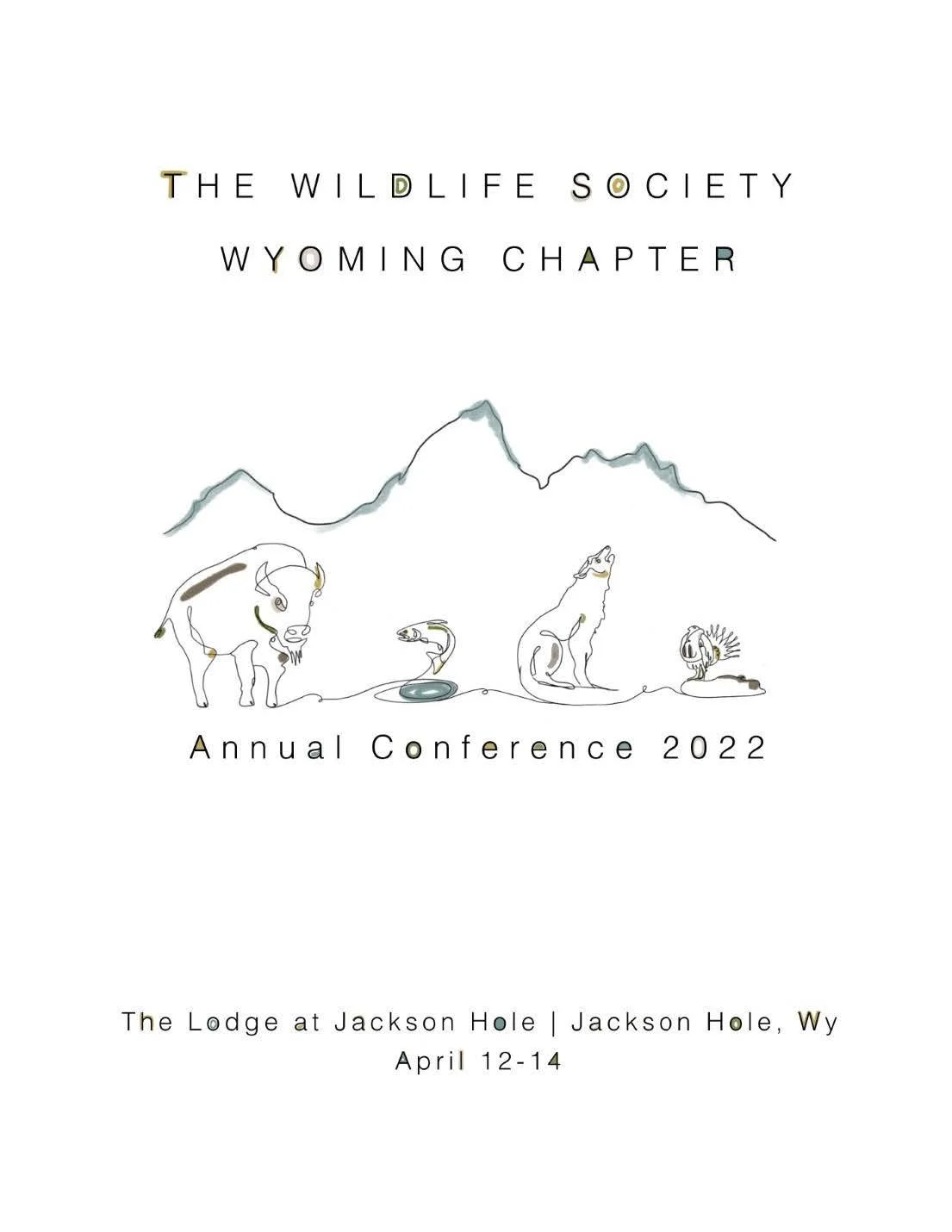Pronghorn Adaptations
Watercolor + Pen
Wyoming Migration Initiative
Pronghorn have some extraordinary adaptations that make them the fastest land animals in the Western Hemisphere. (We’re talking up to 60 mph!) They have very lightweight but strong bones to allow for maximum speed. The front hooves are larger than the back ones, and they have pads that act as shock absorbers to cushion the leg bones from impact as they run. Pronghorn have an enlarged heart, lungs and trachea to provide oxygen to their muscles to help them run faster. Like most hooved animals, they also lack collarbones, which allows for wider range of front leg movement. That flexibility combines with long legs to make a long stride. At top speed, each running stride covers about 29 feet. A pronghorn could travel the length of a football field in 3.5 seconds, taking just 10 strides.
With this much running…muscles heat up the core temperature, which can be dangerous to the brain. Pronghorn use external heat exchange with the environment and internal heat exchange between the carotid artery rete (a configuration of arteries and veins in at the base of the brain) and their nose to regulate their temperature.
Pronghorn are the finely-tuned hot rods of the prairies. Unlike deer and elk, which share a lineage with species in Asia, pronghorn are the result of ~2 million years of evolution right here on this continent. Today Wyoming is their stronghold, with 436,000 animals (or 47 percent) of the 915,800 pronghorn in North America.
Custom Map - JHLT
Digital Pen
This custom map was featured in Park County Open Lands — Jackson Hole Land Trust Newsletter. The visual elements represent the values of Park County.
Yeeehaw!
Digital Pen
The Wildlife Society - Wyoming Chapter 2022 Conference Logo
Wildlife researchers and conservationists frequently face the harsh realities of species loss and habitat degradation. Tackling these challenges day after day can be exhausting. This logo serves as a reminder to embrace a little fun while paying tribute to the iconic Bucking Horse and Rider logo of the University of Wyoming in Laramie, where the TWS conference was held.
Connected
Digital Pen
The Wildlife Society - Wyoming Chapter 2024 Conference Logo
WY-TWS has made a continued effort to celebrate relationships amongst its members and the agencies and entities they work for. With a renewed goal to prioritize diverse perspectives, this logo work encourages reflection on how our differences can create a harmonious unity, emphasizing the power of connection and mutual understanding in a complex world.
Finding Connection
Digital Pen + Watercolor
The Wildlife Society - Wyoming Chapter 2021 Conference Logo
Being connected is crucial not only for human relationships and the sharing of scientific knowledge but also for the functioning of the ecosystems. The well-being of one species can impact the health of an entire ecosystem and the same could be said for the well-being of a wildlife professional and it’s impact on their work. This modern, continuous line-work symbolizes the dawn of a new era for WY-TWS as they work to incorporate more inclusion, diversity, equity and awareness into their chapter operations.
Sublette Mule Deer Migrations
Digital Art + Animation
Jackson Hole Public Art Mural Exhibit WildWalls
Every spring, the Sublette mule deer herd in western Wyoming migrates from their winter range in the Red Desert to higher elevation summer ranges in the Wind River Range, the Hoback Basin and even into Idaho, near Island Park. These deer swim rivers and traverse steep mountain passes, all while malnourished from the cold winter and on the verge of giving birth. As the Mountain West continues to grow, and the climate changes these animals face even more challenges, like roads, fences, and development. We must work together to find science and community-based solutions to conserve these iconic migrations.







